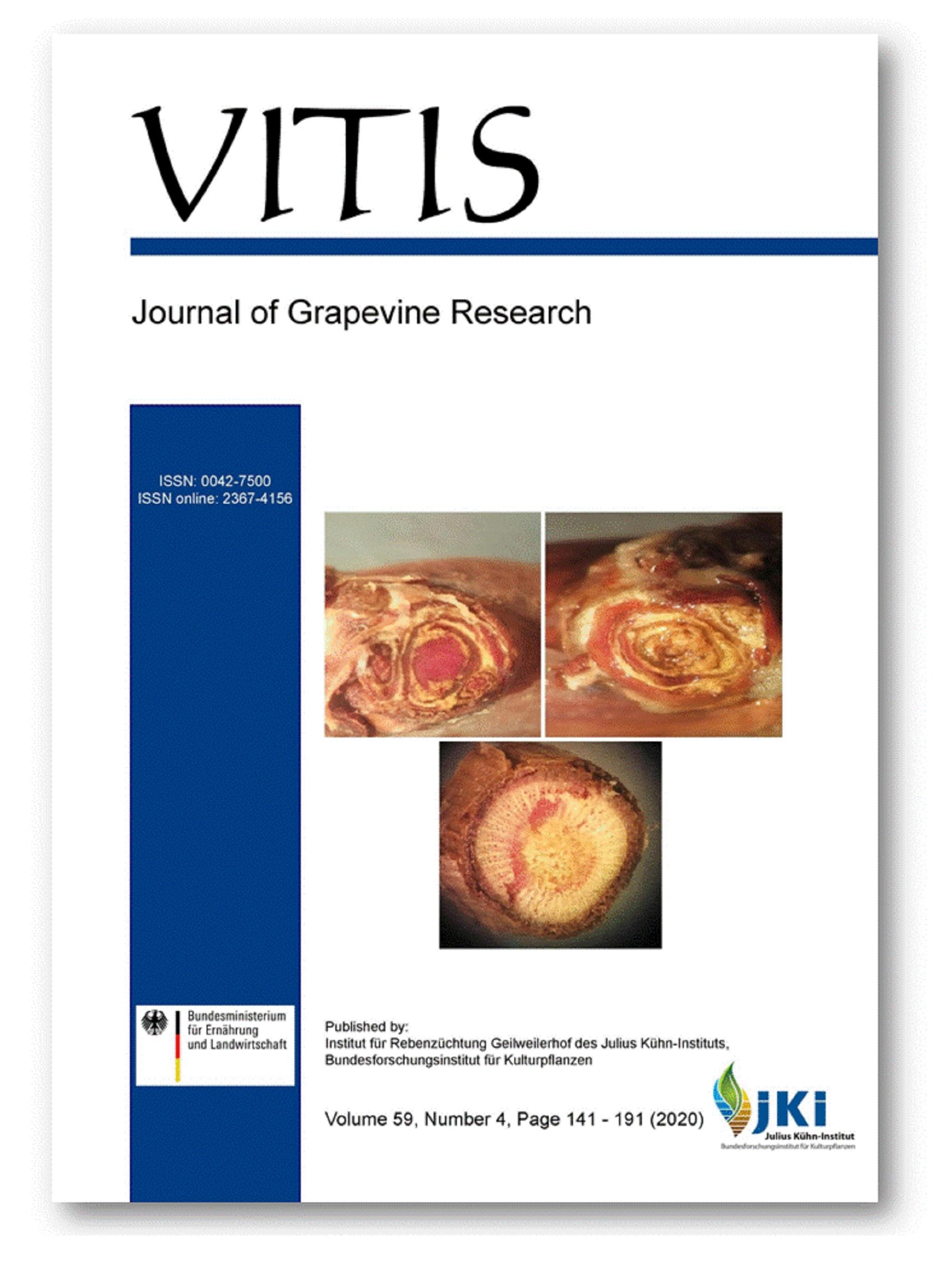Ripening effect on the concentration of polyfunctional thiol precursors in 'Gewürztraminer'
DOI:
https://doi.org/10.5073/vitis.2020.59.149-153Keywords:
'Gewürztraminer'; 3-mercaptohexan-1-ol; 4-mercapto-4-methylpentan-2-one; ripeningAbstract
The effect of ripeness on the concentration of polyfunctional thiol precursors was investigated in 'Gewürztraminer' juices in two vintages characterised by very different climate conditions. An incremental trend of glutathionyl-3-mercaptohexan-1-ol and cysteinyl-3-mercaptohexan-1-ol during ripening was observed. The increase in the last phase of maturation was noticeable in both vintages. The concentration of 4-S-glutathionyl-4-methylpentan-2-one and 4-S-cysteinyl-4-methylpentan-2-one was confirmed to be low in 'Gewürztraminer', although the latter was found at quantifiable levels in a couple of samples. The management of the harvest date appears to be highly important in order to exploit the potential grapefruit-like note related to polyfunctional thiols of little aromatic GWT wines, particularly in case of challenging vintage years.
Downloads
Additional Files
Published
Issue
Section
License
The content of VITIS is published under a Creative Commons Attribution 4.0 license. Any user is free to share and adapt (remix, transform, build upon) the content as long as the original publication is attributed (authors, title, year, journal, issue, pages) and any changes to the original are clearly labeled. We do not prohibit or charge a fee for reuse of published content. The use of general descriptive names, trade names, trademarks, and so forth in any publication herein, even if not specifically indicated, does not imply that these names are not protected by the relevant laws and regulations. The submitting author agrees to these terms on behalf of all co-authors when submitting a manuscript. Please be aware that this license cannot be revoked. All authors retain the copyright on their work and are able to enter into separate, additional contractual arrangements.



